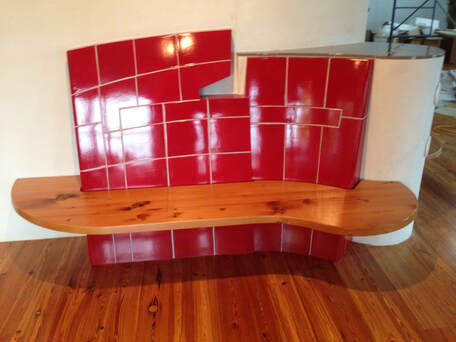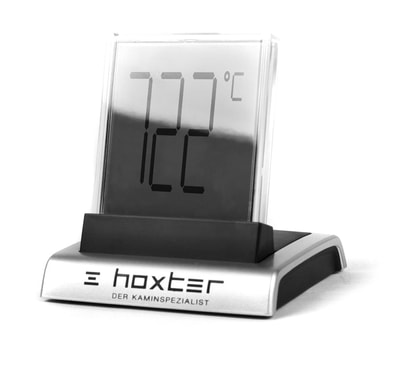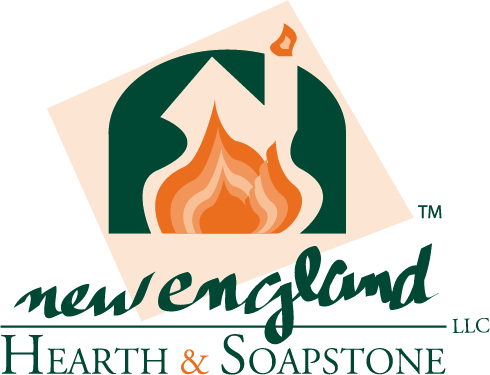Radiant Heat, Functional Art & Warm Furniture Custom Designed for Your Space and Needs
A custom masonry heater allows you to enjoy the full benefits that these heaters have to offer. When a heater is designed for your space, it's heat function and aesthetics are calculated to to be optimal for your personal situation.
The Details are in the Design
Functional Art & Warm Furniture as the Centerpiece of Your Home
Over the years, Rod's designs have evolved to incorporate the qualities and functionality of the heater into an expressive medium, creating art that functions as the center of the home. The warmth of the heater draws us in to the space. Rod designs incorporate benches....
Your Family's Focal Point
Ideally, your heater should be where you and your family spend the most time, so it can spend as much time as possible keeping you warm. Wherever it is, though, your heater will become your home's focal point -- its glowing heart, its "fire in the belly." The word "focus" originally meant fireplace or hearth, and we still carry within us powerful archetypes of our ancestors' relationship to the fire: the need for heat and light; nourishment from cooking; the ritual of feeding the fire; the social contacts which perpetuated the culture. Of course, your heater doesn't need to perform all of the above functions -- but it can. You can build in a glass door for viewing the fire; a bake oven; a cast-iron cook top; heated benches for sitting or lying; even a domestic hot-water hookup. Each feature will require a heater with a different footprint and hearth requirement.
Curious About What Your Dream Masonry Heater Can Be?
There are many elements to consider when envisioning your ideal heater and how it can become the center of your home.
We hooked up with Rod for our masonry heating unit. he had the experience and knowledge to bring together a rather broad array of features to produce a beautiful center piece for our post and beam kitchen/great room. The MHU includes: dual door fire box, baking oven, wood fired cooktop, Garland gas cooktop, and stucco finish with brick accents. We look forward to the long wood burning season when we always have a warm oven for incredible roasts, soups, and stews, and the heated soapstone bench for cockle warming. We were so impressed with his work that he did our soapstone and marble counters and the blue stone patio as well. Great job!
John
Bethlehem, CT
Bethlehem, CT
Masonry Heater Options and Considerations
Permanence
Unlike a metal stove which you can carry into your house, a masonry heater is a permanent structure built into your home, stone by stone. It can be designed into a new home, or constructed in an existing one.
New Build or Retrofit
Half of our business at New England Hearth & Soapstone is in retrofitting existing homes; due to our design capabilities, our custom heaters fit beautifully into any period home.
Features
Features may be built all at one time, or added in stages; in a new construction, the chimney can be prepared for future installation of the heater.
Planning
To decide which heater will work best for you, the following factors should figure in your planning process:
Placement
Your masonry heater should be built in a central, well-ventilated area, to ensure an appropriate supply of oxygen and efficient heat distribution. By placing it centrally located, you and your family will garner the benefits of the heat, keeping you warm throughout the heating season. Being able to gather around the fire is a highlight of the day.
Unlike a metal stove which you can carry into your house, a masonry heater is a permanent structure built into your home, stone by stone. It can be designed into a new home, or constructed in an existing one.
New Build or Retrofit
Half of our business at New England Hearth & Soapstone is in retrofitting existing homes; due to our design capabilities, our custom heaters fit beautifully into any period home.
Features
Features may be built all at one time, or added in stages; in a new construction, the chimney can be prepared for future installation of the heater.
Planning
To decide which heater will work best for you, the following factors should figure in your planning process:
- Aesthetic features
- Desired functions of the heater
- Room divider
- Cooking or baking center
- Heated seating area
- Room divider
- House and room layout and energy efficiency
- Climate
- Appropriate mass or weight to store heat
- Correct firebox size
- Surface area necessary to radiate the appropriate amount of heat
- Heat-exchange channel design
Placement
Your masonry heater should be built in a central, well-ventilated area, to ensure an appropriate supply of oxygen and efficient heat distribution. By placing it centrally located, you and your family will garner the benefits of the heat, keeping you warm throughout the heating season. Being able to gather around the fire is a highlight of the day.
Modern Precision Meets Timeless Tech
|
Our optional electronic combustion control system is an automated method of ensuring ideal heat retention in your heater. The system monitors the temperature of the fire and gradually tapers down airflow as the fire wanes, before shutting the damper when the fire goes out.
"They've been using these in Europe for close to 20 years, and I've been using them for at least five years. It monitors the combustion process with a thermocouple and recognizes when the major part of the fire is done. It then steps down the air supply going into it, and eventually shuts the supply off. The convenience is wonderful; it maximizes your use of fuel, so you don't have to be educated to know when to shut the stove down. It shuts it down for you at the appropriate time, so you use less fuel and you get more heat out of it." - Rod Zander |
Technical Considerations
Building & Fire Codes
Your masonry heater must meet the requirements of local building and fire codes. Local codes have not presented a problem for any New England Hearth & Soapstone installations to date, and as masonry heaters become more widely known, more local codes are acknowledging the unique nature of this heating method.
Certification
Masonry heaters do not require EPA Certification because they burn cleanly; they also do not require UL listing.
Insurance
For insurance purposes, a masonry heater is neither an open fireplace nor a wood burning stove, but a heating system that is safer than either of these because of the greatly reduced risk of chimney fires and fewer hot surfaces in the home.
ASTM
The American Society for Testing and Materials Standard Guide for Construction of Solid-Fuel Burning Masonry Heaters lists the following clearances, to be applied in conjunction with local building codes:
In both retrofits and new construction, metal studs and fireproof sheet rock or non-combustible cement board may be used to reduce the above clearances. The top of the heater must be accessible for repair and maintenance, and an ash-clean out pit is required at the chimney base. In addition to these requirements, different states have different codes regulating the intake of outside combustion air in very tight (energy-efficient) houses.
Your masonry heater must meet the requirements of local building and fire codes. Local codes have not presented a problem for any New England Hearth & Soapstone installations to date, and as masonry heaters become more widely known, more local codes are acknowledging the unique nature of this heating method.
Certification
Masonry heaters do not require EPA Certification because they burn cleanly; they also do not require UL listing.
Insurance
For insurance purposes, a masonry heater is neither an open fireplace nor a wood burning stove, but a heating system that is safer than either of these because of the greatly reduced risk of chimney fires and fewer hot surfaces in the home.
ASTM
The American Society for Testing and Materials Standard Guide for Construction of Solid-Fuel Burning Masonry Heaters lists the following clearances, to be applied in conjunction with local building codes:
- 4 inches from heater to combustible rear, side and front walls
- 8 inches from heater to ceiling
- 2 inches from heater foundation to combustible materials
- 48 inches from firebox door to combustible materials
- 20-inch hearth in front of firebox door
In both retrofits and new construction, metal studs and fireproof sheet rock or non-combustible cement board may be used to reduce the above clearances. The top of the heater must be accessible for repair and maintenance, and an ash-clean out pit is required at the chimney base. In addition to these requirements, different states have different codes regulating the intake of outside combustion air in very tight (energy-efficient) houses.
How Can Your Home Benefit From a Custom Masonry Heater?
We're here to help connect you with your ideal heater



